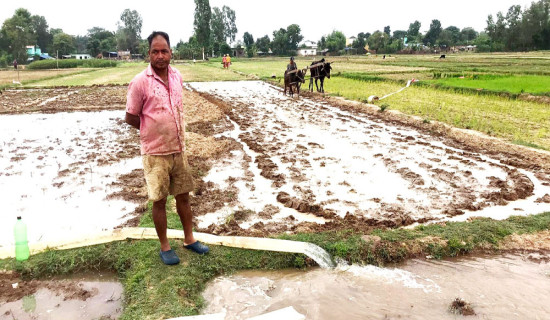- Wednesday, 30 July 2025
New Indices For Assessing Researcher's Impact
The assessment of the impact of a researcher is an important process to be carried out during the recruitment by research institutions and universities. A researcher's impact is mainly measured on the basis of his/her research papers. The number and quality of research papers, followed by subsequent citations and proportion of the contribution by the concerned researcher, are the main factors that are looked into for the assessment of the researcher's impact.
However, in many cases it also happens that a co-author with a little contribution in a paper is equally credited like other co-authors who might have greater contribution to the paper. Such assessment gives even worse results if the paper is published in a high indexed journal and the co-author under consideration has just a little contribution to it. These are the main drawbacks of assessment based only on the number of publications and quality of research paper, which undermine the proportion of contribution by the concerned researcher.
Drawbacks
Despite this fact, the number of publications by a researcher is generally considered as the prime important factor while assessing a researcher's impact. After the assessment based on the number of publications, the citation-based assessment comes as the next step. In the citation-based assessment, the total number of citations and h-index are the two main figures considered. Again, the assessment based on the number of citations and followed by h-index suffers from the similar drawbacks where co-authors with a little contribution are equally credited.
In the recently published article in the International Journal of Bibliometrics in Business and Management (IJBBM), Vol. 2, No.1, 67-74 (2022), we have proposed new indexes to overcome the aforementioned drawbacks. In the article, authored by Manoj Kumar Yadav, Devid Kumar Basyal and Uttam Paudel, three new indices, viz. f-index, c-index and mh-index have been proposed in order to make better assessment of a researcher's impact. The index f gives the number of research papers in which the concerned researcher is the first author.
The article put emphasis for the consideration of this index for the assessment of a researcher because the first author is the one who generally owns above 50 per cent of contribution. The proportion of contribution by other authors with respect to the first author goes on decreasing with the increase in the number of co-authors. Thus, in the case of multi-author research paper, the f-index seems better index which gives distinct credit to the first author.
Further, we have proposed new index ‘c’ to assign credit to the corresponding author. The logic is that after the first author, the corresponding author plays vital role, and in many cases the corresponding author is the principal investigator who envision the research problem and research plan. The authors have put extra emphasis on the modification of the widely used h-index and hence have proposed mh-index as the modified h-index.
Experiment
While f-index and c-index assign distinguished credit to the first author and corresponding author respectively, the mh-index has been proposed to suppress the undue credit assigned by h-index to the co-authors. While h-index assign equal credit to all the co-authors including the first author, the proposed mh-index gives only 50 per cent credit to non-first co-authors. The authors have justified their argument through thought experiment as well as the real experiment.
For the purpose of the real experiment, the authors have analysed the indexes of candidates for associate professor of physics under fast-track recruitment by the Tribhuvan University Service Commission in 2020. The analysis shows that the use of h-index and the number of research papers by non-first author has caused questionable result where a candidate with zero first author paper in any indexed journal was selected. With this experiment, the authors have shown the effectiveness of the proposed indexes which give higher credit to the first author and suppress the undue credit to the non-first author co-authors. It will be a great achievement for the Nepali scholars if the proposed indexes are adopted by researcher’s bibliometric displaying sites.
(Dr Yadav is associated with National Research, Training and Innovation Centre, Kathmandu and Dr Basyal with Quest International College, Lalitpur.)









-original-thumb.jpg)







